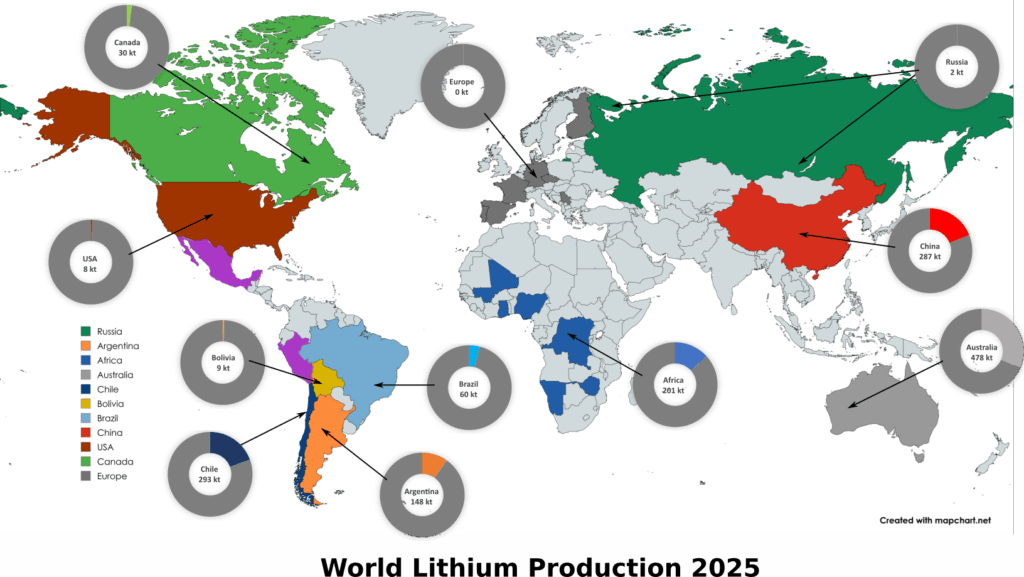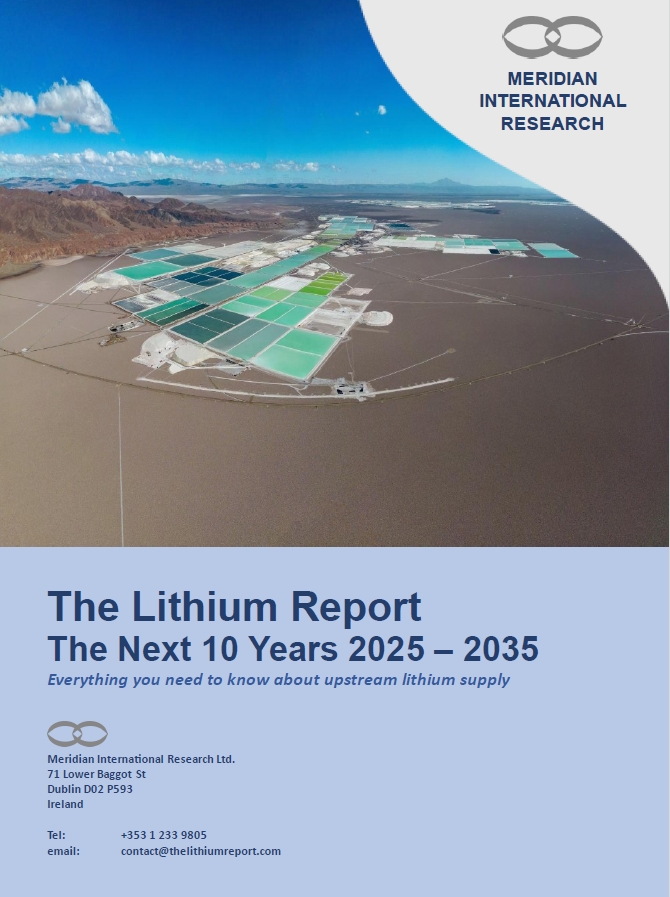The Lithium Report
The Next 10 Years: 2025 - 2035
Everything you need to know about upstream lithium supply.
All the world’s lithium projects in one comprehensive report for the most thorough assessment available of future lithium supply, 2025 – 2035.
All the mines. All the development projects. Worldwide.
In depth analysis for strategic planners and decision makers throughout the lithium supply chain.
850 Pages
145 Chapters
World Overview
11 Regional Overviews
82 Charts and Graphs in the overviews alone
38 Tables in the overviews alone
Maps and Graphics
Excel base data on every mine and project
Published: July 2025
Updated: 3 monthly
What is in The Lithium Report?
The Lithium Report covers all of the active lithium mines and development projects in the world. It provides a detailed assessment of each project and an analysis of the realistic outlook for global lithium supply into the 2030s.


Who should read The Lithium Report?
The report is intended for all decision makers affected by the supply and availability of lithium. Anybody who needs a real understanding of the outlook for lithium and the dynamics that are going to drive supply into the 2030s needs to read this report.
- EV Manufacturers and Suppliers
- Battery Industry
- Finance & Investment
- Government & Policymakers
- Extractive Industries
- Electrification and Energy Transition Companies
EV Manufacturers
Lithium supply is of course critical to the EV manufacturers and EV industry. This report provides the most in depth assessment and analysis ever produced on future lithium supply.
Battery Industry
All companies involved in or affected by the battery supply chain and battery industry should use this report as a benchmark.
Finance and Investment
If you are involved in financing or investing in the lithium industry, related projects or industries affected by lithium, this report is an essential resource.
Government & Policymakers
Lithium is a critical mineral for the energy transition. Subsidies and industrial policy need careful targeting, to back viable projects. This report provides essential information for that.
Extractive Industries
The report is the most through analysis available of the entire lithium mining industry. If you are involved in lithium mining or thinking of entering, this report is essential.
Electrification
Electrification and the wider energy transition is well underway. All sectors undergoing electrification should read this report for in depth knowledge of the lithium supply chain.
Some of the Key Issues Covered.......
Read here about four of the most important factors that will influence development of the lithium industry over the next decade from the links on the right.




The three large mining groups that operate the Greenbushes Mine in Western Australia - Albemarle, Tianqi and IGO - have experienced extraordinary setbacks in their attempts to build a downstream lithium chemicals industry to process concentrate from Greenbushes and make Australia a leading producer of lithium carbonate and hydroxide. These setbacks are nothing less than a strategic and industrial disaster.
A seismic transformation is underway at the Salar de Atacama. Reducing brine extraction and water consumption by 50% has become the number one priority while increasing production by 60%. Billions of dollars will be invested over the next decade to achieve this.
The Central Siberian Platform is a vast region of central Russia extending from the Arctic Ocean to Mongolia. An underground brine reservoir containing lithium extends under the whole platform. Exploitation of this resource is getting under way at the Kovytka Gas Field near Lake Baikal, the largest natural gas field in Russia.
The Manono - Kitotolo spodumene deposit in the Democratic Republic of the Congo is the largest hard rock lithium deposit in the world. A battle for control between Chinese and Western mining interests has been underway since 2019. The dust may have started to settle....
Details on the Report
World Summary
The first chapter is a 16 page World Summary giving a global analysis of lithium resources by country and type of deposit, current production by country and forecast production by country or region out to 2035.
We estimate that primary lithium production will increase by over 20% p.a. from 2025 to 2030 as long as prices remain economically sustainable.
After 2030, additional new and expansion projects will be required to maintain supply growth, which otherwise will fall to less than 6% p.a. To maintain production at over 5 Mt LCE per year from the early 2030s onwards, the world’s lithium brine resources, which are by far the largest resources in absolute size, will have to become the mainstay of future production.
The greatest challenge facing lithium supply growth is the economics of lithium production.
In the World Summary chapter:
- 20 charts and graphs.
- 1 table showing annual mine production from 2022 to 2039 for each of the 13 geographical regions/ countries.
Rest of the Report
After the global summary, the report is organised into 11 main geographical regions plus 3 single-country chapters. The report concludes with a chapter on Sodium Ion developments.
The report is accompanied by the base data in an Excel spreadsheet. This shows current and forecast mine production for each individual mine and development project for each year from 2022 to 2039.
Click on the link below for a Detailed Overview of the report.
Human Performance Statement
This report has been written without using “Artificial Intelligence” (AI) in any way, shape or form. The only use of “AI” has been automatic translation tools on foreign language Internet source material – press articles, reports, presentations and papers, mostly in Chinese, Russian and Spanish.

